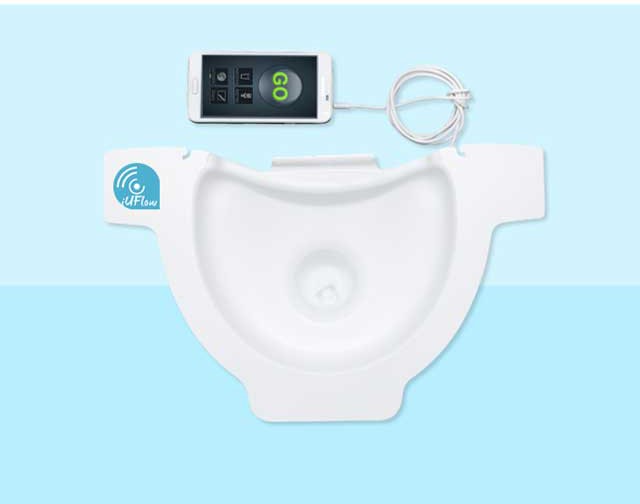Do patients feel at home? Bladder holter device: Feasibility study.
Guy Hidas, MD1, Antoine E. Khoury, MD2.
1Hadassah Hebrew University Medical Center, Jerusalem, Israel, 2University of California Irvine, Irvine, CA, USA.
BACKGROUND:
Uroflowmetry and a voiding diary are important diagnostic tools to assess lower urinary tract symptoms. In-clinic uroflowmetry is a one-off sampling and may not reflect the child’s actual voiding patterns. In addition to being a burden, for patients and families, paper voiding-diaries are frequently associated with poor compliance. Failure to collect accurate data may lead to an inaccurate assessment and treatment resulting in negative experiences for the patients.
iUFlow (fig. 1) an easy to use home bladder-monitoring device, and its smart phone app, allow every void at home to be a validated uroflowmetry and recorded in an electronic voiding diary. This study aims to assess the feasibility of using iUFlow in the pediatric population.
METHODS:
24 patients were asked to complete a 3-day home bladder monitoring using iUFlow, followed by patient Preferences and Satisfaction questionnaire. Additionally, in-office uroflowmetry data were compared to multiple iUFlow readings captured at home.
RESULTS:
22/24 (92%) subjects were fully compliance and completed 3-day monitoring. Mean participant age was 7.8(±3.7) years. Mean uroflowmetry measurements collected per participant was 12(±7.84). 21% of children completed the test without caregiver assistance, 46% of children completed the test together with the help of caregiver and 32% were completely performed by the caregiver. The shape of the curves and Qmax generated by iUFlow corresponded well with the in-office uroflowmetry measurement (fig. 2). The questionnaires show that 94% of the patients had a positive experience using iUFlow technology. Only 6% of the patients reported a preference to use the conventional pen and paper bladder diary over a digital bladder diary, while 62.5% favor a digital bladder diary; 31.3% reported that both are fine.
When asked about the experience of using the device, 42% found iUFlow to be `Very-easy` to use for monitoring fluid intake and bladder events at home, while 36.8% answered it is `Easy`, 21.1% `Acceptable` and none for `Difficult` or `Impossible`.
Patients were asked to estimate how many events were not recorded to the device`; collected median values are two urinations and two drinks per the whole 3 day diary.
When explained about the option of performing pen and paper diary 43% of the patients strongly agree that the digital diary is better than pen-and-paper diary in their eyes, 26% agree, 26% are neutral and only 5% disagree.
CONCLUSION:
iUFlow is an easy to use, automated method for monitoring fluid intake and bladder events at home improving compliance and quality of data collected. iUFlow enables better understanding of the overall behavior of the bladder in the child’s comfortable home environment. 

Back to 2018 Program




